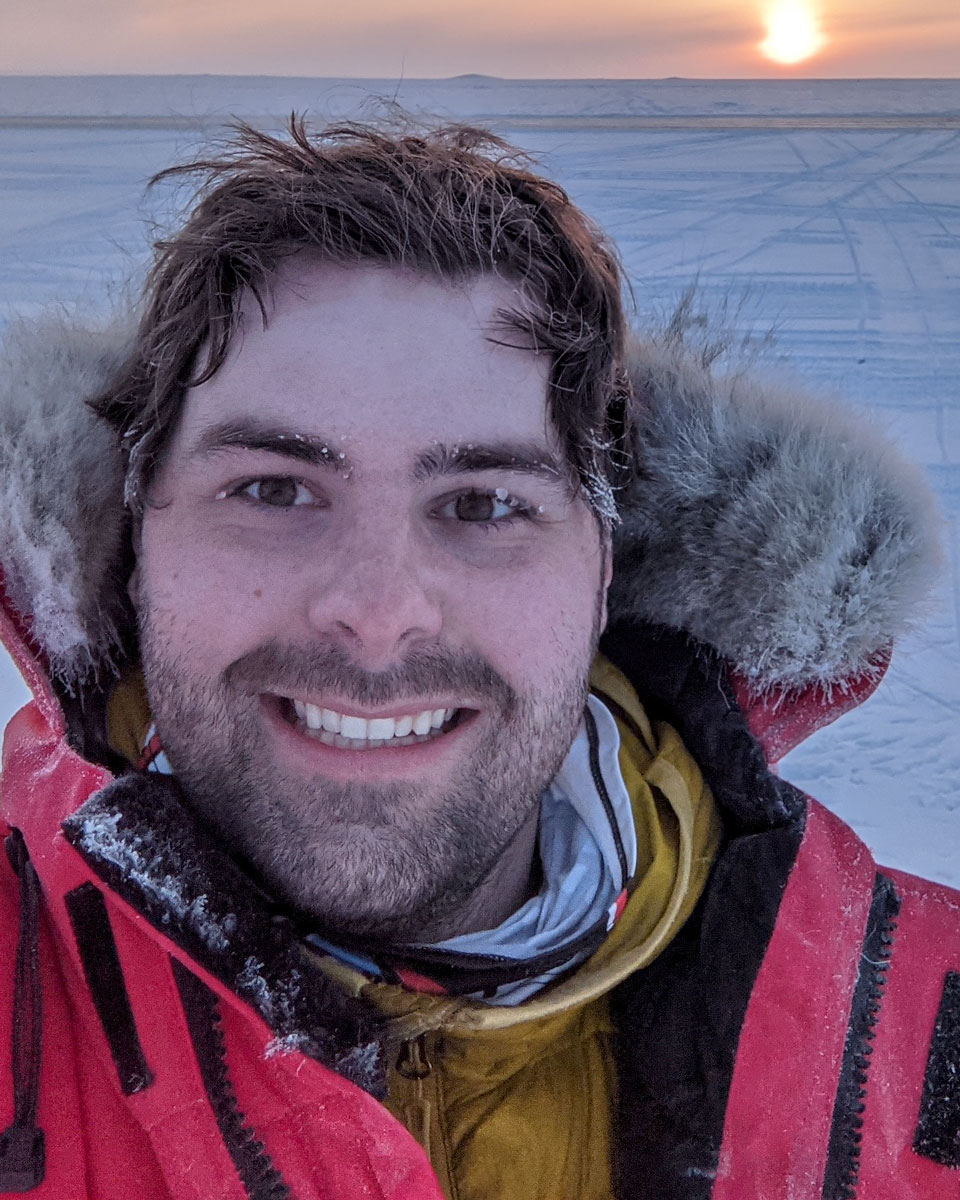Kynan Hughson

Assistant Professor of Geological Sciences
CPISB 301M
907-786-4697
khhughson@alaska.edu
https://www.kynanhughson.com/
CPISB 301M
907-786-4697
khhughson@alaska.edu
https://www.kynanhughson.com/
Education
- Ph.D., Geophysics & Space Physics, University of California Los Angeles, 2019
- M.S., Geophysics & Space Physics, University of California Los Angeles, 2017
- B.Sc., Geology & Physics, University of New Brunswick, Canada, 2014
Biography
I am an Assistant Professor in the Department of Geological Sciences. I obtained my B.Sc. in Geology and Physics at the University of New Brunswick with a focus on impact cratering and shock metamorphism. I earned my M.S. and Ph.D. in Geophysics and Space Physics at the University of California Los Angeles. As an associate member of NASA's Dawn mission science team, I contributed to the geomorphologic mapping of the dwarf planet Ceres. My planetary research focuses on the links between the morphology of surface features on Ceres, such as landslides, impact craters, and hills, and what they tell us about its internal structure and composition. In conjunction with the Dawn Science Team, my work established that, like Earth and Mars, Ceres has abundant reserves of ground ice.I also work on understanding the geological, geophysical, and hydrological processes that shape the surfaces of planets and icy asteroids. On Earth, I study the shape and structure of periglacial landforms such as pingos and rock glaciers and use geophysical methods to link their forms to their subsurface cryohydrologic structure. I am the lead investigator for the Pingo SubTerranean Aquifer Reconnaissance and Reconstruction (Pingo STARR) project. This NASA sponsored PSTAR program is currently collecting a large quantity of high-fidelity geoelectrical and ground penetrating radar data over a series of pingos in the North American Arctic. Pingo STARR is a collaboration between researchers at the University of Alaska Anchorage, Georgia Tech, the Colorado School of Mines, the Planetary Science Institute, and the University of Toronto.
Professional & Department Service
- GEOL A225 Earth Surface Processes
- GEOL A315 Geologic Data Analysis & Visualization
- GEOL A492 Geology Seminar
- Planetary Geology (coming soon)
Research Interests
I am fundamentally interested in how the shapes of landforms inform us of their formation, internal structure, and composition. I am particularly interested in how groundwater and ground ice are distributed and structured in glacial and periglacial environments and what landforms they create on Earth and in the cryospheres of other worlds in our solar system. I use a combination of remote sensing, geophysical field methods, and geophysical modeling to better understand the cryostratigraphic structure of features permafrost and periglacial landforms on Earth and infer the implications for potential analog habitats on Mars, Ceres, and other icy-rich worlds.My current Pingo STARR project uses a combination of remote sensing, ground penetrating radar, electrical resistivity tomography, and transient electromagnetic sounding to probe the 3D structure of pingos in the North American Arctic. The goals of this project is to thoroughly characterize the subsurface structure of active pingo systems during their most frozen periods, test the synergies of various geophysical methods in a planetary analog environment, and to inform the ground ice surveying strategy for next generation of planetary missions.
Publications
Hughson, K. H. G., et al., 2021. The case for pingo-like hills on Ceres from morphometric analysis and comparative planetology. Geology. In RevisionMarusiak, A., et al. (inc. Hughson, K. H. G.), 2021. Exploration of Icy Ocean Worlds Using Geophysical Approaches. Planetary Science Journal, 2, 150.
Schmidt, B. E., Sizemore, H.G., Hughson, K. H. G., et al., 2020. Post-impact cryo-hydrologic formation of small mounds and hills in Ceres’s Occator crater. Nature Geoscience, 13, 605-610.
Park, R. S., et al. (incl. Hughson, K. H. G.), 2020. The crust of Ceres from Dawn’s high-resolution gravity data. Nature Astronomy, 4, 748-755.
Castillo-Rogez, J., et al. (incl. Hughson, K. H. G.), 2020. Science Motivations for the Future Exploration of Ceres. Community White Paper for the Planetary Decadal Survey, 2023-2032.
Hughson, K. H. G., et al., 2019a. Fluidized appearing ejecta on Ceres: Implications for the mechanical properties, frictional properties, and composition of its shallow subsurface. JGR: Planets, 124, 1819-1839.
Hughson, K. H. G., et al., 2019b. Normal faults on Ceres: Insights into the mechanical properties and thermal history of Nar Sulcus. Geophysical Research Letters, 46, 80-88.
Sizemore, H. G., et al. (incl. Hughson, K. H. G.), 2019. A Global Inventory of Ice-Related Morphological Features on Dwarf Planet Ceres: Implications for the evolution and current state of the cryosphere. JGR: Planets, 124, 1650-1689.
Ermakov, A. I., et al. (incl. Hughson, K. H. G.), 2019. Surface roughness and gravitational slope distributions of Vesta and Ceres. Journal of Geophysical Research: Planets, 124, 13-30.
Hughson, K. H. G., et al., 2018. The Ac-5 (Fejokoo) Quadrangle of Ceres: Geologic map and geomorphological evidence for ground ice mediated surface processes. Icarus, 316, 63-83.
Schmidt, B. E., Hughson, K. H. G., et al., 2017. Geomorphological Evidence for Ground Ice on Dwarf Planet Ceres. Nature Geoscience 10, 338-343.
Combe, J.-P., et al. (incl. Hughson, K. H. G.), 2016. Detection of local H2O exposed at the surface of Ceres. Science, 353, 6303.
Buczkowski, D. L., et al. (incl. Hughson, K. H. G.), 2016. The Geomorphology of Ceres. Science, 353, 6303.
Career History/Work Experience
- Assistant Professor, UAA, Department of Geological Sciences, 2021-present
- Research Scientist (II), Georgia Tech, School of Earth and Atmospheric Sciences, 2020-2021
- Postdoctoral Fellow, Georgia Tech, School of Earth and Atmospheric Sciences, 2019-2020
- Research/Teaching Assistant, UCLA, Department of Earth, Planetary, and Space Sciences, 2014-2019









